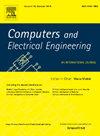Cross spatial and Cross-Scale Swin Transformer for fine-grained age estimation
IF 4
3区 计算机科学
Q1 COMPUTER SCIENCE, HARDWARE & ARCHITECTURE
引用次数: 0
Abstract
Facial age estimation is a classic problem in the field of computer vision. Previous studies have shown that learning discriminative features is crucial for accurate age estimation. Although Swin Transformer has been successfully applied on many computer vision tasks, it cannot effectively capture directional features during the aging process for age estimation task. Moreover, it still exhibits bias towards global features and cannot capture more fine-grained age-related features, ultimately leading to ambiguity in distinguishing adjacent ages. To address these issues, we propose Cross Spatial and Cross-Scale Swin Transformer (CSCS-Swin) that can extract fine-grained age-related features. Firstly, the Cross Spatial Feature Block (CSFB) module is constructed in CSCS-Swin, which extracts facial wrinkle features and craniofacial features along the horizontal and vertical directions, and models feature associations between different facial regions. Secondly, considering that the discrimination power of features at different scales differs in facial regions, Cross-Scale Feature Partition (CSFP) is proposed, which can precisely extract corss-scale fine-grained features. Lastly, the Feature Enhancement Module (FEM) is introduced to further enhance the ability of feature representation. These three modules in CSCS-Swin work together to improve the accuracy of age estimation. Extensive experiments on four popular datasets, namely, MORPH II, UTKFace, AFAD, and CACD, demonstrate the superiority of the proposed method.
用于细粒度年龄估计的跨空间和跨尺度Swin变压器
人脸年龄估计是计算机视觉领域的一个经典问题。先前的研究表明,学习判别特征对于准确估计年龄至关重要。尽管Swin Transformer已经成功地应用于许多计算机视觉任务中,但它不能有效地捕获老化过程中的方向特征。此外,它仍然表现出对全局特征的偏见,无法捕获更细粒度的年龄相关特征,最终导致相邻年龄的区分模糊。为了解决这些问题,我们提出了可以提取细粒度年龄相关特征的跨空间和跨尺度Swin变压器(CSCS-Swin)。首先,在CSCS-Swin中构建交叉空间特征块(Cross Spatial Feature Block, CSFB)模块,沿水平方向和垂直方向提取面部皱纹特征和颅面特征,并对面部不同区域之间的特征关联进行建模;其次,考虑到人脸区域对不同尺度特征的识别能力不同,提出了跨尺度特征分割(Cross-Scale Feature Partition, CSFP)方法,可以精确提取跨尺度细粒度特征;最后,引入了特征增强模块(FEM),进一步增强了特征表示能力。在CSCS-Swin中,这三个模块共同作用,提高了年龄估计的准确性。在MORPH II、UTKFace、AFAD和ccad四个常用数据集上的大量实验证明了该方法的优越性。
本文章由计算机程序翻译,如有差异,请以英文原文为准。
求助全文
约1分钟内获得全文
求助全文
来源期刊

Computers & Electrical Engineering
工程技术-工程:电子与电气
CiteScore
9.20
自引率
7.00%
发文量
661
审稿时长
47 days
期刊介绍:
The impact of computers has nowhere been more revolutionary than in electrical engineering. The design, analysis, and operation of electrical and electronic systems are now dominated by computers, a transformation that has been motivated by the natural ease of interface between computers and electrical systems, and the promise of spectacular improvements in speed and efficiency.
Published since 1973, Computers & Electrical Engineering provides rapid publication of topical research into the integration of computer technology and computational techniques with electrical and electronic systems. The journal publishes papers featuring novel implementations of computers and computational techniques in areas like signal and image processing, high-performance computing, parallel processing, and communications. Special attention will be paid to papers describing innovative architectures, algorithms, and software tools.
 求助内容:
求助内容: 应助结果提醒方式:
应助结果提醒方式:


